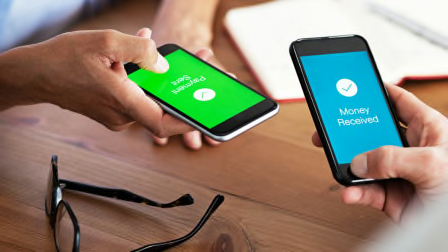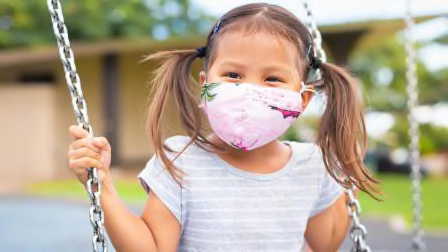What Socializing, Going to Work and School Might Look Like as States Reopen Amid the Pandemic
Experts explain possible changes in the era of social distancing

The coronavirus pandemic has upended what was previously thought of as normal life. To slow the spread of the virus that causes COVID-19, millions of people have changed their routines by working from home, wearing masks in public, and avoiding nonessential interactions.
What was long thought of as “normal” is not coming back anytime soon. But after the current phase of lockdown ends, there will be a new normal—less restrictive than simple stay-home orders, but far different from what we knew before.
"This is not a short term situation,” says Julia Marcus, Ph.D., an infectious disease epidemiologist and assistant professor in the department of population medicine at Harvard Medical School. “We may be doing this for months if not years.”
But, Marcus says, it’s possible to formulate guidance that will help people navigate our new normal while trying to minimize risks. “We have to figure out how we can have a life while keeping risk of coronavirus transmission as low as possible,” she says.
Here’s what experts think our lives might look like as restrictions are lifted but other risk-reduction strategies remain in place.
Reopening Might Not Be Permanent
First, remember that reopening is not a one-way street. Before it’s safe to ease lockdown restrictions, there are certain criteria that experts think should be met. In many of the states where reopening has already begun, these goalposts have not yet been reached.
When case counts for coronavirus are still rising, for example, reopening early may very well lead to a deluge of infections that ultimately precipitates a return to lockdown.
Going Back to Work
Essential workers have continued to report to work throughout the past few months. Many people with white collar jobs are able to telecommute, performing many or most of their work over the internet. But there have been many other people who have lost their jobs or been temporarily unable to work. Many of those people hope to or will need to return to work in the coming months.
While that won’t be risk free, workplaces and businesses vary in terms of risk, according to Malani. “You can think of them as high, medium, and low risk, both in terms of the type of activity that occurs but also the number of customers that are served, or the number of employees that work in a particular space,” she said.
Businesses can take a number of steps to make their employees safer, such as ensuring physical distancing, performing health screenings, minimizing interactions, and frequently cleaning high-touch surfaces.
None of these steps will reduce risk to zero, according to Crystal Watson, a doctor of public health and senior associate at the Johns Hopkins Center for Health Security, who spoke on a press call about reopening. But layering these steps on top of each other will all combine to reduce risk as much as possible, she said.
In the federal reopening guidelines, it’s suggested that employers encourage teleworking and close common areas through at least the first two phases. According to those guidelines, employers can bring everyone back to work during the third phase, our new normal—with frequent cleaning, and some physical distancing in large venues or places that serve many customers.
In the CDC’s explanation of the guidance, however, it’s suggested that workplaces with employees who are over 65 or have pre-existing conditions, such as high blood pressure or diabetes, continue to encourage teleworking when possible throughout all phases. They also suggest teleworking for employees who use public transportation.
The ways we interact with colleagues and business acquaintances are also likely to change. One example? “I’d be surprised if we go back to handshakes,” says Marcus, of Harvard Medical School. “This whole experience is going to make us much more conscious of our close contacts with other people and the risks associated with those contacts.”
Going Back to School
Schools are also going to reopen eventually. But figuring out how to do so safely “is a really tough question,” said Watson.
The CDC’s current guidance recommends that during the first stage of reopening, closed schools remain closed. They can reopen—with physical distancing measures in place—during stage two, for kids within the local area. During stage three, the guidance suggests that distancing measures be maintained. These guidelines suggest changes like having kids kept with the same group of students all day (rather than mixing with the whole student population), instituting staggered drop-off and arrival times, and putting strict limits on events and extracurricular activities that might pose a high risk of infection.
The guidance also suggests daily health checks for students, when possible. If a case is diagnosed, schools should consider closing for a day or two for cleaning, according to the CDC’s document. Guidance for childcare operations such as daycares is similar, with suggestions that communal-use spaces like playgrounds remain closed when possible.
Even though reopening schools and childcare operations is necessary, “there is going to be some risk to children and to their caretakers and to their families when we reopen schools,” according to Watson.
Shopping and Dining Out
As businesses reopen, people will again be able to shop and dine at restaurants—but again, there are likely to be changes in place.
During phase one of reopening, CDC guidance suggests that restaurants stick to delivery and take-out. During phase two, restaurants and bars can reopen with limited capacity for seated patrons. By the third reopening phase, the CDC guidance suggests that restaurants and bars could remain open, but with capacity limited so that customers can practice social distancing.
When restaurants are open for dining, they should consider keeping a log of everyone who comes in to dine, to make the job of contact tracing easier if public health experts later discovered that someone who was sick went out to eat, suggested Leonard Mermel, D.O., an IDSA fellow and professor of medicine at Warren Alpert Medical School of Brown University, speaking on an IDSA call. Servers should potentially be screened for symptoms before each shift, and should wear masks and potentially a face shield to help prevent infection. It’s even possible that restaurants might put plastic shields between tables to help prevent one table of diners from infecting another.
Giving restaurants more outdoor space or ceding parts of streets to pedestrians could also help people keep interactions outdoors, where coronavirus transmission is less likely, suggests Marcus.
Plastic shields might also become commonplace in shops, separating cashiers from buyers, suggests Moss, of Johns Hopkins. And mask wearing could be with us for a long time.
An Ever-Changing Situation
So how long will we be practicing social distancing measures to prevent the spread of the coronavirus? Possibly at least until a vaccine is developed—potentially by the end of this year, according to Anthony Fauci, M.D., director of the National Institute of Allergy and Infectious Diseases. But even once a successful vaccine is created, it will have to be widely produced and distributed, which could easily take months.
It’s also possible that after years of dealing with the disease, as more people are exposed, immunity will gradually build up in the population. Even if that immunity wanes over time, it could still potentially leave people somewhat less likely to get ill. If that happens, or if we develop a vaccine that provides some protection but isn’t perfect (as is the case with the flu vaccine), the coronavirus may just become a less severe but still dangerous disease that we continue to deal with. In that case, it would become what’s known as an endemic virus.
“At some point, I don’t know how many years away it is, I imagine this coronavirus is going to be a respiratory virus that transmits among us, like influenza, and it’ll be another respiratory virus that causes significant mortality each year, as influenza does,” says Moss. “It’ll become a little bit more part of our life.”
Even if there is a vaccine, experts don’t yet know whether it will be perfectly effective, or that everyone will get it. In that case, there may continue to be flare-ups and outbreaks of the coronavirus indefinitely.
“This is a marathon, not a sprint,” says Castel, of George Washington University. “We are in this for another 12 to 18 months at a minimum, in terms of responding to the pandemic and before we get back to what will be our new normal.”




















